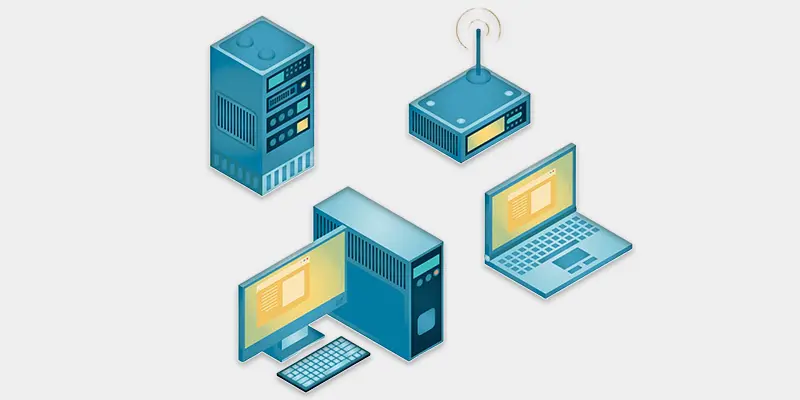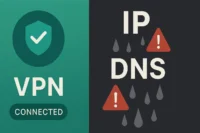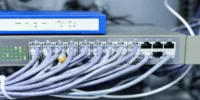SD WAN Installation | Tips to Improve Network Performance
Published: 1 Apr 2025
SD WAN Installation
SD-WAN installation is transforming business networks, with over 60% of enterprises adopting it for better security and performance. But many IT teams still wonder, “Is SD-WAN installation complex or just another over hyped tech trend?” The real challenge lies in dealing with slow networks, high costs, and security risks—issues that SD-WAN aims to fix. Imagine setting up a smart traffic system for your data, directing it efficiently without delays. That’s exactly what SD-WAN installation does, making your network faster, safer, and more reliable from day one.
What is SD-WAN Installation
SD-WAN installation involves setting up a Software-Defined Wide Area Network to enhance internet speed, security, and connectivity across various locations. It allows businesses to manage networks efficiently using smart software, reducing dependence on traditional hardware.

Real-Life Example of SD-WAN Installation
Example: A Retail Chain Upgrades to SD-WAN
A retail company with 50 stores struggled with slow internet and frequent network outages, making it hard to process payments and update inventory in real time. They installed SD-WAN to connect all locations through a single, smart network.
The setup took just a few days, and immediately, their internet speed improved, downtime reduced, and security got stronger. Now, store managers can track sales and inventory without delays, and customer checkouts are faster and hassle-free.
Understanding SD-WAN Installation
SD-WAN installation is about setting up a smart, software-controlled network that connects multiple locations securely and efficiently. Unlike traditional networks, SD-WAN automatically chooses the best and fastest route for data, improving speed and reducing downtime.
Pre-Installation Checklist
Before installing SD-WAN, make sure you have:
- A stable internet connection (Broadband, MPLS, or LTE)
- SD-WAN appliances (Routers, firewalls, and cloud controllers)
- Software setup (SD-WAN management dashboard for monitoring)
- A trusted SD-WAN provider (Cisco, Fortinet, VMware, etc.)
Steps to Install SD-WAN
- Step 1: Network Assessment: Check your current setup and bandwidth needs.
- Step 2: Hardware Setup: Connect SD-WAN devices to your network.
- Step 3: Software Configuration: Set traffic rules, security settings, and priorities.
- Step 4: Testing & Optimization: Monitor performance and adjust settings for better efficiency.
Common Challenges and How to Solve Them
Even though SD-WAN installation is easier than traditional networks, some challenges may arise. Here’s how to solve them:
Connectivity Issues
Problem: Some locations may experience unstable internet connections.
Solution: Use multiple internet links (broadband, LTE, or MPLS) so SD-WAN can automatically switch to a better connection when one fails.
Configuration Errors
Problem: Incorrect SD-WAN policies can lead to poor performance.
Solution: Follow vendor guidelines or use automated templates to set up traffic rules correctly. IT teams should test configurations before full deployment.
Security Concerns
Problem: A poorly configured SD-WAN may expose your network to cyber threats.
Solution: Enable firewalls, encryption, and threat detection within SD-WAN settings to protect data from cyberattacks.
Vendor Selection Confusion
Problem: Choosing the right SD-WAN provider can be overwhelming.
Solution: Compare vendors based on cost, security, ease of use, and customer support before making a decision.

Conclusion About Installation of SD WAN
SD-WAN installation is a game-changer for businesses seeking better network performance and security. I highly recommend choosing a reliable provider that offers easy deployment and strong support. Ready to upgrade your network? Get started with SD-WAN today.
FAQS
A cloud-based technology called SD-WAN as a service aids companies in controlling network traffic. It enhances flexibility, security, and performance without requiring pricey hardware.
SD-WAN is implemented by setting up SD-WAN routers or software at different locations. It connects these sites through secure internet links, replacing traditional private networks.
To set up SD-WAN, choose a provider, install SD-WAN routers or software, and configure network policies. Then, connect branch offices to ensure secure and fast communication.
SD-WAN improves network speed, security, and reliability. It reduces costs by using the internet instead of expensive private connections and makes management easier.
SD-WAN is used in businesses, remote offices, retail stores, healthcare, and cloud-based services. It helps connect multiple locations securely and efficiently.
SD-WAN can have security risks if not properly configured. It depends on internet connections, which can lead to downtime or cyber threats if not well-protected.

- Be Respectful
- Stay Relevant
- Stay Positive
- True Feedback
- Encourage Discussion
- Avoid Spamming
- No Fake News
- Don't Copy-Paste
- No Personal Attacks

- Be Respectful
- Stay Relevant
- Stay Positive
- True Feedback
- Encourage Discussion
- Avoid Spamming
- No Fake News
- Don't Copy-Paste
- No Personal Attacks





